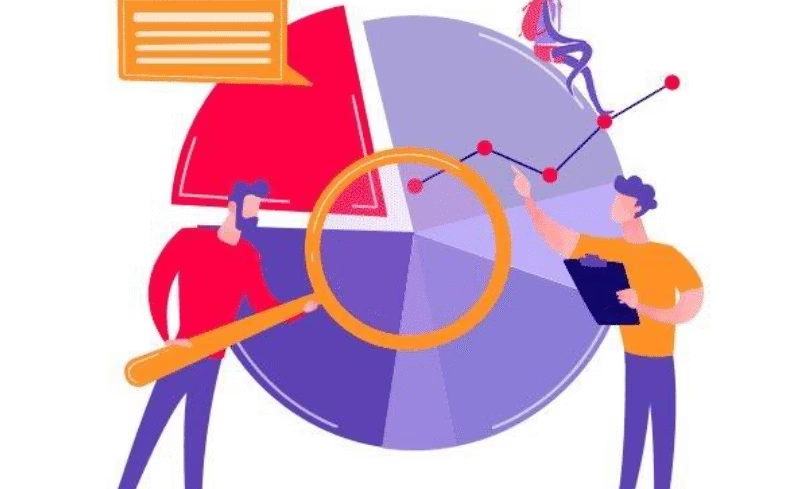In today’s data-driven world, information is often hailed as the “new oil.” But unlike finite natural resources, data is renewable, dynamic, and grows exponentially. Its value, however, depends on how it’s managed throughout its life cycle. Understanding this journey is critical for businesses, governments, and individuals alike. Let’s break down the stages of the data life cycle and explore why each phase matters.
Below are the six main stages of the data life cycle. At the end of the first two stages, I have provided a case in point to illustrate the potential consequences your company or institution may face if these stages are taken lightly. These are well-known cases that can be easily found online.
1. Creation
The life cycle of data begins with its creation. Whether it’s generated through user interactions, IoT devices, or third-party sources, the creation stage sets the tone for how data will be used and managed. The first question to ask is, “Is this data relevant and can I even use it?” This involves evaluating whether the data is necessary, ethical, and compliant with legal standards.
For example, the General Data Protection Regulation (GDPR) in the European Union mandates that data collection must have a lawful basis, such as consent or legitimate interest. Similarly, the California Consumer Privacy Act (CCPA) requires businesses to inform consumers about the data being collected and its intended use. The same point is also articulated in the Data Protection Act, 2012 (Ghana).
Ethical considerations are equally important. If a third party is providing the data, organizations must ensure that the data is collected ethically and comply with all relevant regulations. Other questions such as “Who is the owner of the data” and “What are the limitations for its use?” must be addressed at this stage to avoid legal and reputational risks.
Case in Point: In 2024, Meta Platforms agreed to pay Texas $1.4 billion to settle allegations of unlawfully collecting biometric information from millions of Texans without proper consent.
2. Storage
Once data is created, it must be stored in a way that balances accessibility, security, and cost-effectiveness. The choice of storage location is critical. Is the data stored in a centralized system, or is it scattered across local storage spaces? Centralized storage often improves accessibility and security, but it must be designed to handle the volume and sensitivity of the data.
Data duplication is another consideration at this stage. While backups are essential for disaster recovery, they can lead to version control issues. Organizations must implement systems to identify the latest version of the data, such as timestamping or version control software. The format in which data is stored also matters. For example, CSV files may be ideal for analysts, while JSON or XML formats might be better suited for developers.
In Africa, laws like Nigeria’s Data Protection Regulation (NDPR) and Ghana’s Data Protection Act (2012) mandate strict controls over how sensitive data is stored, including encryption and access restrictions. These regulations are designed to protect individuals’ privacy and prevent unauthorized access to personal data.
Case in Point: Uber faced a €290 million fine in 2024 for improperly transferring sensitive driver data from the EU to the U.S., violating GDPR’s stringent data transfer regulations.
3. Management
Data management is the backbone of the data life cycle, ensuring that data remains secure, compliant, and usable. A key question to ask is, “Does the data contain Personally Identifiable Information (PII)?” If so, it must be handled with extra care to comply with data protection regulations which require organizations to implement measures such as data minimization and pseudonymization.
Organizations must also consider who is receiving the data. Are they compliant with data protection standards? For example, if data is shared with third-party vendors, contracts should include clauses that enforce compliance with relevant laws. Additionally, companies should have a robust information security policy in place, outlining how data is protected from unauthorized access, breaches, and other risks.
4. Use
The use of data is where its value is realized, but only if the data is current, accurate, and fit for purpose. Outdated or irrelevant data can lead to flawed insights and poor decisions.
Accuracy is equally important. Are the reports and analyses based on the data free from errors? For example, inconsistent formats or missing fields can undermine the reliability of the data. Regular validation and cleaning processes should be implemented to ensure data remains accurate and usable.
5. Archiving
Not all data needs to be actively used, but some must be retained for compliance, historical analysis, or future reference. Archiving involves moving data to cost-effective storage solutions while ensuring it remains accessible when needed.
Metadata tagging is essential for easy retrieval. Clear labels and descriptions can save time when archived data is required for audits or historical analysis. Organizations must also comply with record retention policies.
6. Disposal
When data is no longer needed, it must be disposed of securely and responsibly. Improper disposal can lead to data breaches and legal liabilities. Organizations must have a clear process for disposal, including methods like digital shredding or physical destruction of storage devices.
At this stage, a record retention policy is essential to determine when data should be disposed of. For example, GDPR’s “right to be forgotten” allows individuals to request the deletion of their data, and organizations must comply within a specified timeframe. Similarly, the Payment Card Industry Data Security Standard (PCI DSS) mandates secure disposal of cardholder data to prevent fraud.
Why the Data Life Cycle Matters
The data life cycle is a continuous process that requires attention at every stage. Neglecting any phase can lead to inefficiencies, security breaches, or legal penalties. By addressing the considerations outlined above, organizations can ensure their data is ethical, secure, and valuable from creation to disposal.
The Future of Data Management
As data volumes grow and technologies like AI and edge computing evolve, the data life cycle will become more complex. Organizations that prioritize ethical creation, secure storage, and responsible disposal will not only comply with regulations but also build trust and drive innovation.
What steps is your organization taking to optimize its data life cycle?
Author: Kaunda Ismail | Member, IIPGH
For comments, contact: kaunda@outlook.com | Facebook.com/KaundaAi





